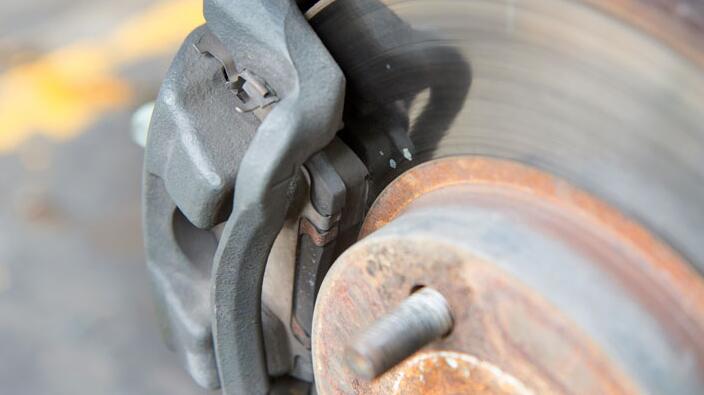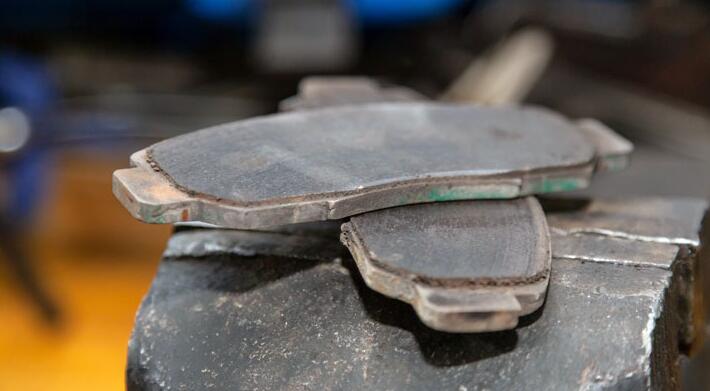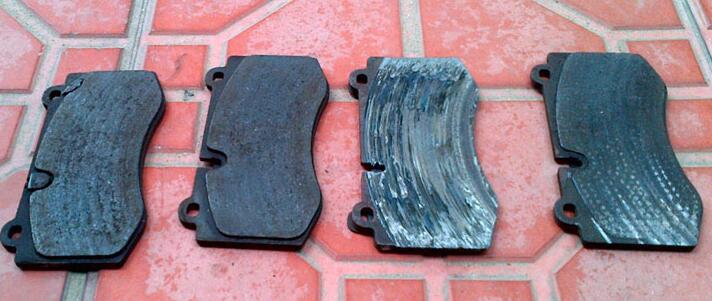Copyright © Shindary Automotive Parts Co., Ltd. All Rights Reserved
When you apply the brakes, the hydraulic fluid converts the movement of the brake pedal into a powerful clamping force that stops your vehicle. Your brakes should be strong and reliable, because if a child or animal suddenly bursts out in front of you, a short braking distance could mean the difference between life and death.
Brake pads are the parts that contact the brake discs when the brake pedal is pressed, applying friction and pressure to the discs to slow down the rotation of the wheels.
Vehicles with disc brakes have brake pads, while vehicles with drum brakes do not. The latter are an older type of brake and are not very good at dissipating heat or slowing down the vehicle in wet weather.
Since the brake pad material runs out slightly each time the brake pedal is pressed, they don't last forever. So how long do brake pads last and what are the factors that affect their average lifespan?
LK-3501130 Front brake pad set for BYD F0
Since brake pads help slow a vehicle by contacting moving rotors on the wheels, they experience a lot of friction, which wears down the pad material. Friction also heats up the brakes, which can damage the pads over time.

Brake pads are consumable items because they wear out with use. While there are many factors that can determine how long brake pads are safe to use on your vehicle, the average life expectancy of most vehicles is between 30,000 and 70,000 miles.
Repeated hard stops can significantly shorten the life of brake pads, but this is expected behavior in performance applications, such as track day sports cars.

The average brake pad life depends on several factors, including pad material, driving conditions, vehicle type and load, and personal driving style. Here are some of the factors that affect brake pad life
Drivers who use both feet to operate the brake and gas pedals tend to use their left foot to "apply" the brakes. This causes the brake pad material to wear at a faster rate.
● Brakes wear faster in areas that require a lot of braking (such as mountain roads) or where they are stopped in town or stop-and-go traffic, simply because they experience more friction and heat.
● Bigger, heavier vehicles are often equipped with stronger, more robust brake pads because they need more help slowing and stopping objects with such high momentum. Vehicles carrying large loads (such as semi-trucks) are typically expected to have the same or better brake pad life than on-highway vehicles, but passenger vehicles that are often used to transport heavy loads will wear out their pads more quickly.
● High performance vehicles require better brake pads because they are often driven near the limits of the vehicle, accelerating and decelerating quickly. Drivers who bring regular street pads to track days or autocross events may even chew on the pads after one or two events, as street pads are not typically intended to be used in this manner for repeated hard stops.
● When braking, the weight of the vehicle shifts to the front axle. This puts more braking responsibility on the front brakes, which is why they are typically larger and wear faster. A proportioning valve is a device used to balance the front and rear braking deviations.
● More patient drivers experience faster brake pad wear than drivers who are too close to other vehicles. The close following distance means they have less time to react, which leads to repetitive and more abrupt braking.
● Smooth, consistent braking makes brake pads last longer. It will also save your other braking system components from unnecessary wear and tear.
● Ceramic pads usually have the longest service life. Semi-metallic pads are the next longest, and organic pads usually have the shortest life.
● If ABS (anti-lock braking system) is activated, it will reduce braking distance as expected, but may significantly increase pad wear on the rear brake pads.
● The proportioning valve is a mechanical device on older vehicles. Newer vehicles with ABS use an electronic proportioning valve that sends more braking power to the rear when the rear brakes are locked and the ABS is ready to intervene.

It's a good idea to check your brake pads at every oil change, as service life can vary greatly. Also check your vehicle's service manual for the recommended replacement interval.
It's best to replace brake pads before you notice any symptoms to extend the life of other components such as rotors and calipers.
Brake pads actually help with heat dissipation. When brake pads wear out, they can't absorb as much heat and are more likely to brake fade.
As a rule of thumb, you need to consider replacing your brake pads when they are the same thickness as your backing plate. Try not to wait until you hear the dreaded screeching sound from the pad wear indicator!
Rotors usually wear out over time due to the friction of the pads. They last longer than pads because they can be resurfaced (flattened or even again) a few times before they need to be replaced.
If you see any symptoms of your brake pads starting to fail, make sure you replace them immediately, preferably with the same type of material.
Previous: SPARE PARTS NUMBERS FOR BYD F3
Shindary Automotive Parts Co., Ltd.